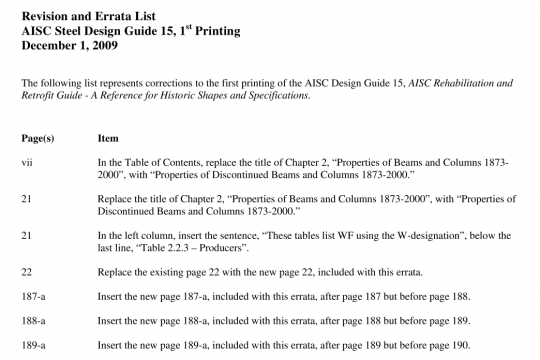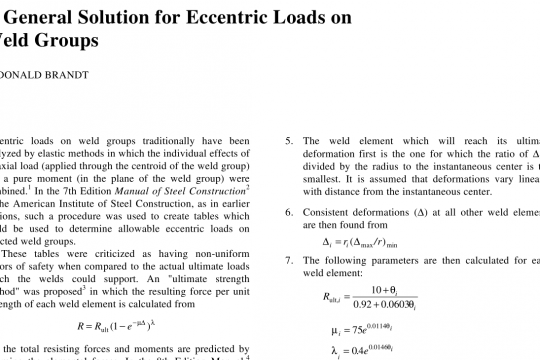AISC Design Guide 11 pdf free download
AISC Design Guide 11 pdf free download.Floor Vibrations Due to Human Activity.
Existing North American floor vibration design criteria are generally based on a reference impact such as a heel-drop and were calibrated using floors constructed 20-30 years ago. Annoying floors of this vintage generally had natural frequen- cies between 5 and 8 hz because of traditional design rules, such as live load deflection less than span/360, and common construction practice. With the advent of limit states design and the more common use of lightweight concrete, floor systems have become lighter, resulting in higher natural fre- quencies for the same structural steel layout. However, beam and girder spans have increased, sometimes resulting in fre- quencies lower than 5 hz. Most existing design criteria do not properly evaluate systems with frequencies below 5 hz and above 8 hz. The design criterion for walking excitations recommended in Section 2.2.1 has broader applications than commonly used criteria. The recommended criterion is based on the dynamic response of steel beam and joist supported floor systems to walking forces. The criterion can be used to evaluate con- crete/steel framed structural systems supporting footbridges, residences, offices, and shopping malls.If the natural frequency of a floor is greater than 9-10 Hz, significant resonance with walking harmonics does not occur, but walking vibration can still be annoying. Experience indicates that a minimum stiffness of the floor to a concentrated load of 1 kN per mm (5.7 kips per in.) is required for office and residential occupancies. To ensure satisfactory perform- ance of office or residential floors with frequencies greater than 9-10 Hz, this stiffness criterion should be used in addi- tion to the walking excitation criterion, Equation (4.1) or Figure 2.1. Floor systems with fundamental frequencies less than 3 Hz should generally be avoided, because they are liable to be subjected to “rogue jumping” (see Chapter 5). The following section, based on Allen and Murray (1993), provides guidance for estimating the required floor properties for application of the recommended criterion. 4.2 Estimation Of Required Parameters The parameters in Equation (4.1) are obtained or estimated from Table 4.1 and Chapter 3 For simply supported footbridges is estimated using Equation (3.1) or (3.3) and W is equal to the weight of the footbridge. For floors, the fundamental natural frequency, and effective panel weight, W, for a critical mode are estimated by first consid- ering the ‘beam or joist panel’ and ‘girder panel’ modes separately and then combining them as explained in Chap- ter 3. Application of the criterion requires careful consideration by the structural engineer. For example, the acceleration limit for outdoor footbridges is meant for traffic and not for quiet areas like crossovers in hotel or office building atria. Designers of footbridges are cautioned to pay particular attention to the location of the concrete slab relative to the beam height. The concrete slab may be located between the beams (because of clearance considerations); then the foot- bridge will vibrate at a much lower frequency and at a larger amplitude because of the reduced transformed moment of inertia.This parameter does not appear in Equation (5.1) but it appears in Equation (2.5a), which applies if resonance occurs. Because participants contribute to the damping, a value of approximately 0.06 may be used, which is higher than shown in Table 4.1 for walking vibration. AISC Design Guide 11 pdf download.




